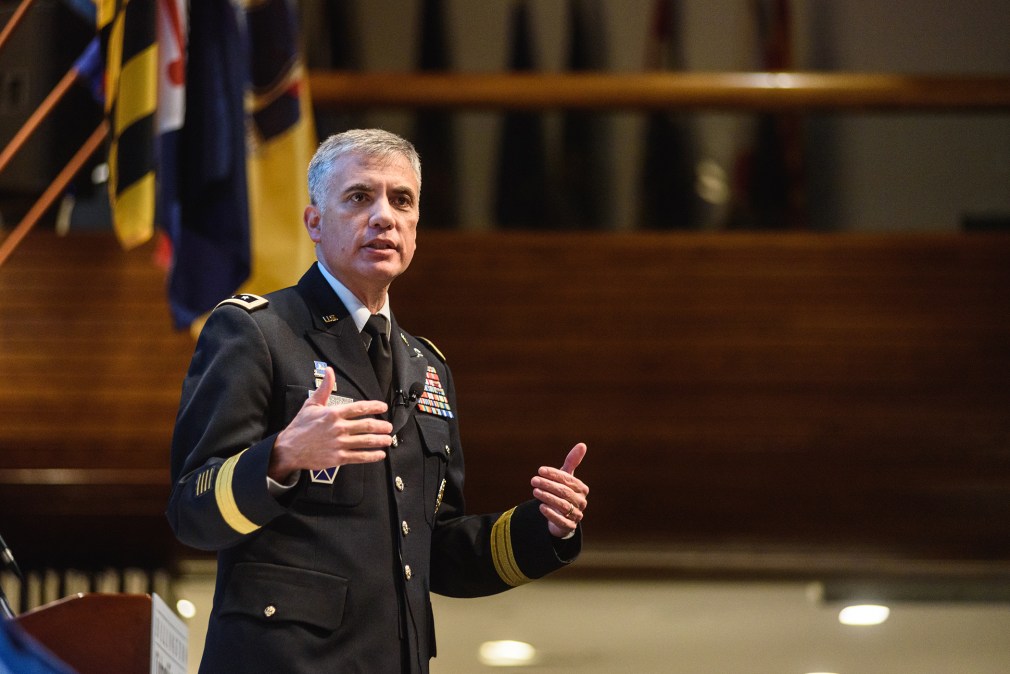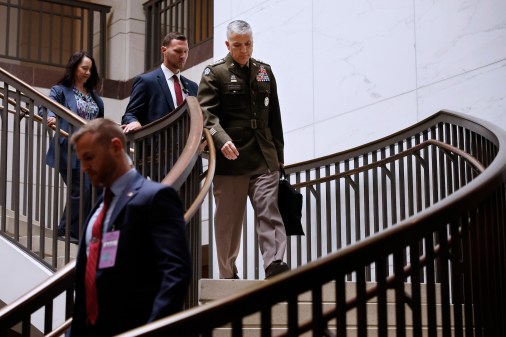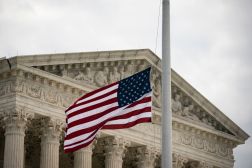These are the favorites to become the next NSA director

With NSA Director Adm. Mike Rogers set to retire later this year, several prominent names are already being floated among government leaders as to who will become the next leader of the country’s premier signals intelligence agency.
Several sources with knowledge of the discussions said the “name at the top of the list” is U.S. Army Cyber Command Gen. Paul Nakasone, who has helped pioneer the U.S. Army’s offensive and defensive cyber-operations mission.
The sources — both current and former U.S. officials — spoke on the condition of anonymity in order to freely discuss the candidate search.
Other contenders include Lt. Gen. William Mayville, who now serves as director of operations for the Pentagon’s Joint Staff, and Lt. Gen. Vincent Stewart, deputy commander of U.S. Cyber Command, according to two current U.S. officials.
Rogers’ retirement was first reported by The Washington Post and independently confirmed by CyberScoop.
The Cipher Brief similarly reported on Friday that Nakasone was the top candidate for the job.
A candidate is expected to be nominated by President Donald Trump before the end of February. Rogers will stay on until a nominee is confirmed by the Senate.
Rogers’ departure comes amid an agency in flux: long-standing reports of low morale at the spy agency have continued to plague NSA as it prepares to spin off U.S. Cyber Command.
The Office of the Director of National Intelligence has taken a lead role in deciding who Rogers successor will be. Sources said that Director of National Intelligence Dan Coats has increasingly favored the idea of keeping the “dual hat” arrangement in place, which allows for the NSA Director to also lead U.S. Cyber Command.
“Any notion that the DNI has made a final decision about NSA or Cyber Command leadership or structure is completely false,” said ODNI spokesperson Kellie Wade.
The White House originally announced plans for Cyber Command to be elevated to a Unified Combatant Command, on par with the likes of SOCOM and STRATCOM, in August 2017.
Trump signed the 2018 National Defense Authorization Act (NDAA) into law in December, which also calls for a separation of U.S. Cyber Command from NSA. The NDAA includes a measure for Congress to reassess the prospect of a dual hat leader.
In the past, the NSA Director has typically been staffed by active duty military; usually a four-star general or admiral. But when news broke that Cyber Command would finally be elevated to a Unified Combatant Command, some believed the change meant that NSA — a largely civilian employed agency that acts under Title 50 authorities — might finally receive its first civilian leader.
Based on information provided to CyberScoop, that reality now appears less likely.
Rogers, who arrived at NSA in April 2014 after serving as the Commander of the Navy’s Tenth Fleet and Fleet Cyber Command, will have led the spy agency for a full four-year term before retiring. During his tenure, the NSA was reorganized, combining elements of its defensive and offensive workforce into a single unit. This reorganization effort is known as “NSA21.”
Rogers played a pivotal role in guiding the evolution and maturation of Cyber Command to the point where the executive branch decided it was time to be upgraded with additional powers and funding.
*This story has been updated to include a comment from the Office of the Director of National Intelligence






